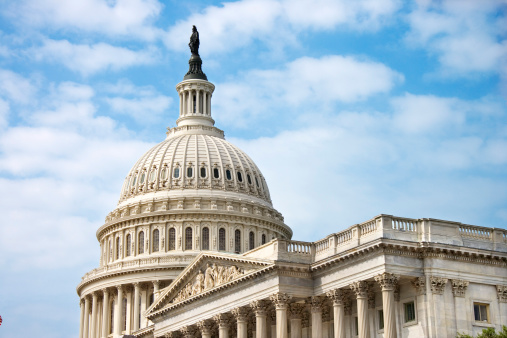The Markets – The S&P 500 index finished February +3.0 the Dow was +3.7% for the month and the NASDAQ finished the month +3.4% according to the Wall Street Journal.
U.S. equities continued their rebound off the December lows through the end of February with the Dow Industrials (DJIA), Nasdaq Composite (CCMP), Nasdaq 100 (NDX), and Russell 2000 (RTY) indices each extending their streak of weekly gains to nine. All of the major equity indices closed out February with YTD gains ranging between 11% and 17%, and the January trend of smaller cap stocks outperforming large, and cyclicals outperforming defensives, rolled on in February.
Overall sentiment is that the U.S. economic growth is slowing, and anticipated to sustain a growth rate of 1.5 to 2% this year. With the aging U.S. economic cycle, there is an increased likelihood of a recession in 2020. What could go right, in our opinion, is that various uncertainties—including trade, monetary policy, and political risks—are resolved, leading to a wave of capital spending and a virtuous economic cycle of stronger growth and higher productivity and wages.
However, we do see signals that concern us; corporate profits and the shares of companies that are most sensitive to the earnings cycle have been moving in opposite directions recently. That doesn’t happen often, but when it does, it almost always signals trouble. Stocks of companies in cyclical sectors, such as industrials, banking and energy, have been outperformers this year with cyclical stocks, like Bank of America, Boeing and Exxon Mobil leading the market this year. While headwinds loom, U.S.earnings growth is expected to slow in 2019, with the possibility of disappointing quarterly periods. The disconnect last year between the economy and economic-cycle sensitive stocks was resolved with those stocks catching up to the economy. But if they get too far out front this time, the outcome won’t be as pleasant.
What we anticipate is that the Fed funds rate is maintained at 2.5 to 2.75%, with no hikes in the first half of 2019 and maybe one later in the year. A stronger economy will continue to drive down unemployment and accelerate wage growth. This could keep the Fed cautious with higher wages, consumer consumption rising, and inflation remaining in check.
What we hope is that the trade dispute is resolved and China and emerging markets thrive as global economic activity resynchronizes while lower tariffs spur capital spending and manufacturing. All that could spur U.S. earnings growth back to 9 -10%. The fate of emerging markets is tied to China, rates, and the dollar. Uncertainty scared investors off especially in the final quarter of 2018. Since early January recent optimism for risk resolution has led to increased interest. Emerging Markets has now become a crowded trade in which the wisdom of which will likely be determined by the strength or weakness of the dollar.
One last point: recently the spread between the 1 year U. S. Treasury note and the 5 year U.S. Treasury note inverted temporarily. As of March 1, the 1 year is paying 2.54% while the 5 year is paying 2.55%. However, most of the month of February saw the 1 year paying more than the 5 year by an average of 8 basis points. We have written in the past about the inversion of the yield curve with the spread between the 2 year U.S. Treasury and the 10 year U.S. Treasury being the most watched. When the spread inverts, in essence, investors are saying the economy will be better in five years because they believe the Fed will either over shoot rates, or simply, the U.S. will see recession in the coming 1 – 3 years.
Have a question? Let me know! Email me at kcompton@wsmtexas.com.

